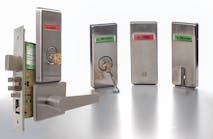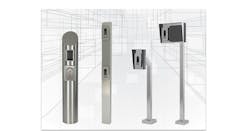An Illinois woman filed a lawsuit recently which should be of interest to locksmiths. According to the published account, a stranger stopped the lady in front of her home and asked her for money. The woman refused, then entered her home and locked the deadbolt on her door. The stranger reportedly kicked the door open, then stabbed the victim several times and assaulted her before fleeing. The intruder was captured and is awaiting sentencing.
According to the attorney, "the door lock shattered when he (the stranger) kicked the door in. The lock was designed and manufactured with inferior strength components which caused it to fail." The victim is reportedly suing both the manufacturer of the deadbolt and Home Depot where the lock was purchased.
No details were disclosed as to what part of the deadbolt lock actually shattered. The news article does state that the victim’s father purchased the lock at Home Depot. Most items purchased at big box stores are for DIY projects so there may be some question about the installation procedure.
Regardless of the deadbolt brand, the strongest part of any residential lock installation is usually the lock itself and the weakest link is usually the questionable construction of modern doors and jambs. Police programs on TV routinely show how a heavy pipe is used as a battering ram to punch a door open with only a few swift blows. The wooden door or frame structure usually does shatter while the lock bolt remains in the extended, locked position.
In an earlier career I visited a lock factory in Finland on several occasions. Residential doors in Finland usually open outwards and have a rabbeted jamb. Overlapping doors protect against the elements in winter but also are more protective against kick-ins since the doors open outwards. In addition, it is much safer to have an outswinging for a quick exit in an emergency.
While the legal reasoning for using inswinging doors may not be clear, we must currently do the best we can under the circumstances. During every lock installation job, advise your customer about the availability of additional protection such as security strikes or hinge pins and let the customers decide what level of protection they are comfortable with.





